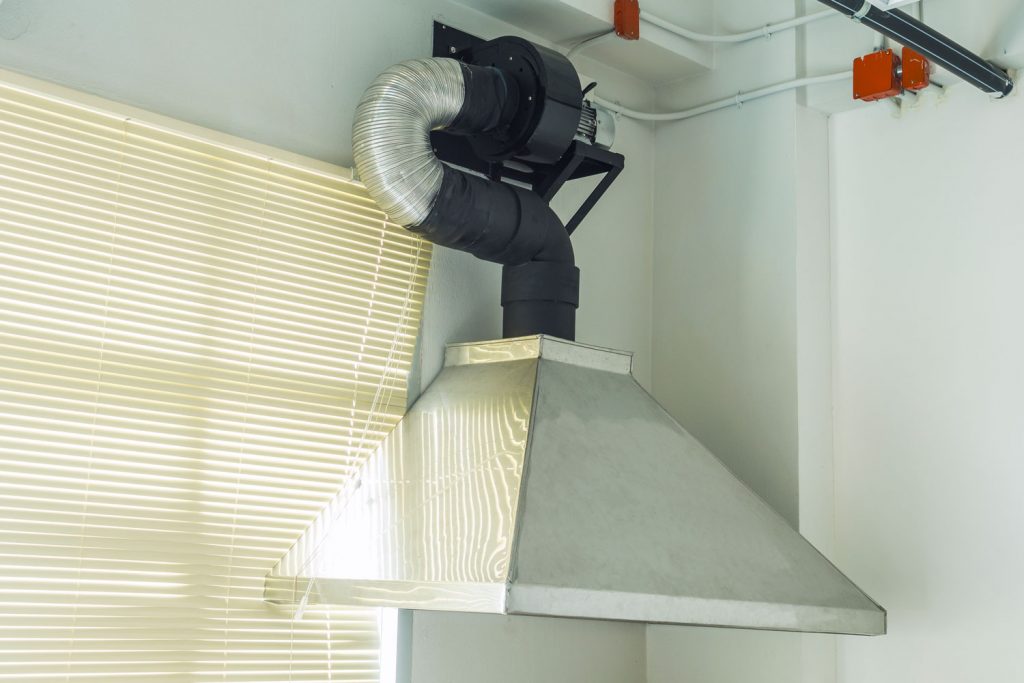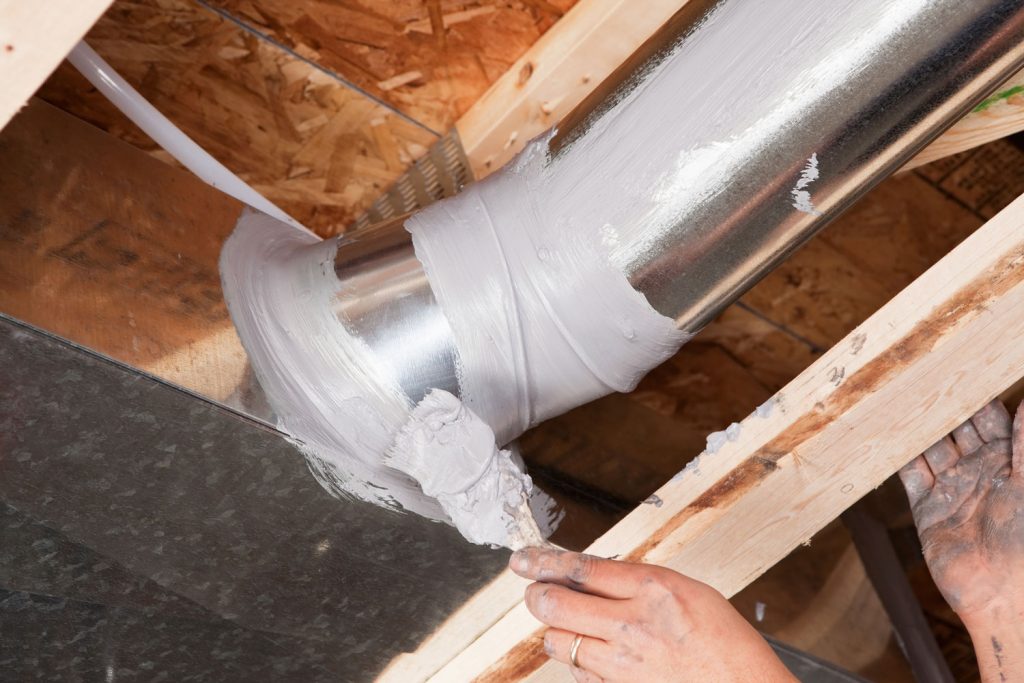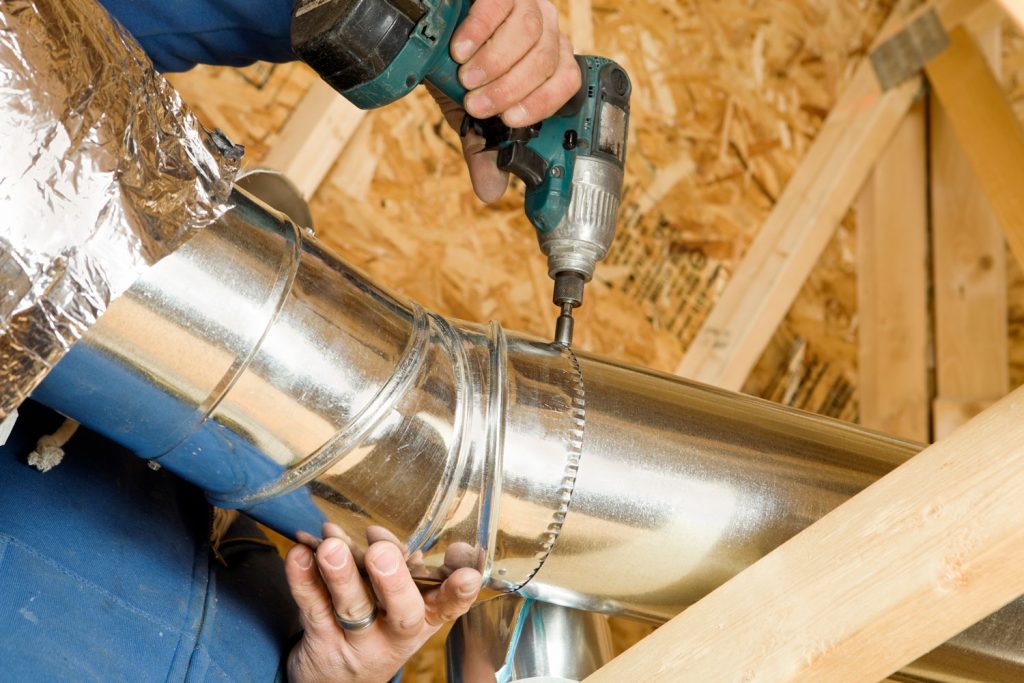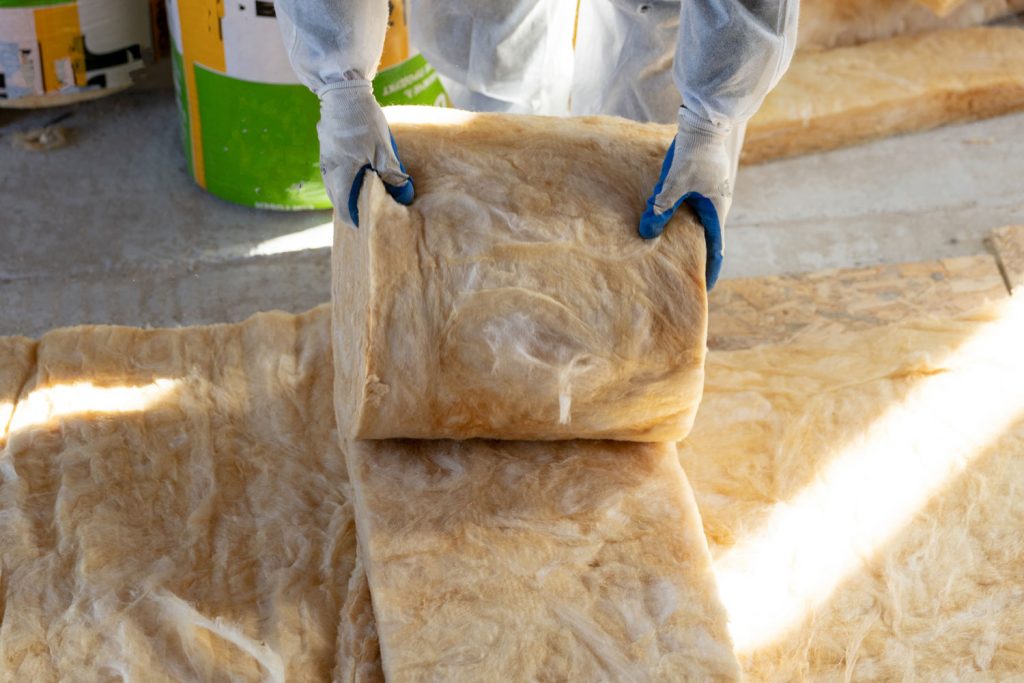Before the winter months set in, it may be helpful to do an inspection of your home's insulation. It helps to ensure that you have properly applied insulation to these areas to conserve energy. But what about the ductwork? More specifically, how do you insulate a ductwork elbow? We've researched this inquiry, and in this post, we will discuss it.
Here are the steps to insulate ductwork elbow:
- Measure the ductwork elbow
- Measure and cut the insulation
- Apply the insulation to the elbow
- Secure the insulation in place
Insulating ductwork is fairly easy, but you may be scratching your head wondering how to affix it around an elbow — which has a more irregular shape. But don't fret, it's easier to do than you may think. Continue reading to learn more about how and why it can be beneficial.
![A man crimping the GI duct elbow, How To Insulate A Ductwork Elbow [A Complete Guide]](https://hvacseer.com/wp-content/uploads/2021/08/How-To-Insulate-A-Ductwork-Elbow-A-Complete-Guide-683x1024.png)
Contents
Steps to Insulate Ductwork Elbow
According to the US Department of Energy, HVAC ducts should be insulated to help preserve the air temperature returned from a furnace or air conditioner system.

Before you get started, there are a few things you'll need:
- Goggles
- Protective clothing
- A dust mask
1. Measure The Ductwork Elbow
Start by taking your tape measure and measuring the girth of the ductwork elbow. Next, measure the length of the elbow from top to bottom.
Click here to see this tape measure on Amazon.
2. Measure And Cut The Insulation
Next, use your tape measure to measure the insulation so that it matches the ductwork measurements. It can also be helpful to cut a strip of the insulation and wrap it around a straight piece of the ductwork to check the fit.
After taking your measurements, cut the insulation to the fitting of the elbow. This way, you can know how much overlap you'll need. Also, make sure that the insulation is actually facing the ductwork properly, so the foil side of the insulation should be facing outward.
3. Apply The Insulation To The Elbow
Next, take your newly cut piece of insulation, and while holding the insulation with one hand, wrap it around the ductwork and use your other hand and apply a strip of tape along its seam. If you run into trouble trying to fit the insulation around the elbow properly, consider cutting it in half so that one piece will fit the top half of the elbow and the other piece will fit the bottom half.
Click here to see these utility scissors on Amazon.
4. Secure The Insulation In Place
Then, use your tape to tape up all of the seams. When applying the insulation, be sure not to press the insulation into the ductwork, as it can reduce its effectiveness. You want the fit to be tight, but you don't want the insulation to be compressed.
Click here to see this insulation tape on Amazon.
Does Ductwork Need To Be Insulated?
Ductwork needs to be insulated in some cases, but in others, it may not. It really depends on the climate of your location and your home's HVAC setup and overall structure. If you have ductwork in your basement and attic that's constantly exposed to hot and cold temperatures coming from outside, it can be beneficial to insulate it to prevent issues with humidity and condensation.
However, insulation may not be necessary if you live in a fairly dry area, such as in the southwestern states. Most HVAC technicians may recommend insulating your ductwork if you live in the southern, northern, or northeast part of the states.
Ductwork Insulation Benefits
Ductwork insulation can be very beneficial and prevent issues with the growth of microbes such as fungus, mold, and other problems that can stem from humidity and condensation.
It Can Minimize Air Leaks
The more you can minimize air leaks within your HVAC system, the better. Air can leak down through the windows, holes in the walls, and cracks in the exterior of the building. Unsurprisingly, it can also leak through your ductwork. This actually accounts for about 25% to 30% of energy loss in most homes.
Keep in mind that these types of leaks can make your HVAC system work much harder to regulate your home's temperature. So, if you're looking to save on your energy bill, insulating your ductwork may be a step in the right direction. Why not maximize the efficiency of your ductwork if you can? And it doesn't cost an arm and a leg to do so.

It Helps To Prevent Condensation Buildup
As cold air from outside travels through your ductwork to the interior of your home, it can cause a significant amount of condensation to build up inside of your ductwork. This is a recipe for mold and mildew growth. However, insulation can help to prevent these microbes from forming.
While dehumidifiers can also help with this, they may not be as impactful as insulating the ductwork in some cases. This is especially true if you live in an area that is relatively humid throughout the year. Also, note that breathing mold spores can be a health hazard, so it's beneficial to minimize this as much as possible.
It Can Assist In Dampening Noises
One of the best ancillary benefits of insulation is its ability to reduce noises within your home. Sound travels easily through ductwork, bouncing off the thin metal sheets into your home's interior. However, when there is a thick layer of insulation on top of these thin metal sheets, loud sounds such as random rattling, popping, or creaking coming from various areas of the house will be minimized.
What Type Of Insulation Is Used For Ductwork?
For the most part, the insulation you use for your ductwork will typically depend on your home's specific type of ductwork. However, more often than not you'll find that fiberglass rolls are used to insulate ductwork in various areas of the home. This insulation typically comes in blanket style or wrap form with a foil backing.
The great thing about fiberglass insulation if that it is fairly inexpensive and can be purchased at most home improvement stores. Before shopping for insulation for your ductwork is best to determine the R-value that you need. You can check with your local government or EPA to find out the appropriate or value for your state.
You can also purchase rigid form fiberglass insulation. This is best to use on rectangular-shaped ducts as opposed to flexible or elbow-shaped pieces. These insulation boards are just as effective and they can be used in addition to other types of insulation.
Is Foil Tape Good For Insulation?
Yes, foil tape is good for insulation. Foil tape is the most common product used to adhere insulation to ductwork. Not only does foil tape provide resistance to extreme hot and cold temperatures, but it has impressive sticking power. Also known as "HVAC tape," quality foil tape products are certified by International Building Code standards.
So, if you're looking to purchase coil tape for an HVAC system, find a UL-certified brand. This will ensure that you get a tape made with quality adhesive and that can be versatile in its ability to secure your ductwork.
Also, foil tape is way less messy than mastic, which is also commonly used to seal ductwork. It also doesn't require any additional fasteners such as scrap metal, screws, or drywall mesh to seal larger areas.
Why Is My Ductwork Sweating?
Sweating ductwork is a common complaint from many homeowners in the colder months of the year. There are a few different things that cause this.
Bad Insulation
Ductwork that is not insulated well can cause sweating when the air is warm and there is moist air coming through it. The temperature of the passing air causes this; as it cools, it makes the metal on the ductwork cold. Subsequently, condensation will develop around the exterior of the ductwork and can wreak absolute havoc on drywall, ceilings, floors, and any other area in your home where the ductwork is placed.
This is another reason why it's always best to make sure that your ductwork is up to code. If you noticed that the insulation around your ductwork has become damaged, flattened, or moldy, it is best to remove it and replace it with fresh new insulation asap.
Read more: How To Insulate Garage Ceiling Rafters
Excessive Humidity
If you live in an especially humid environment, this can cause your ductwork to sweat more than if you were in a drier climate. It's helpful to have a dehumidifier in your home to keep the humidity levels down. If not, you may find that your ductwork may sweat on days where the relative humidity levels are over 55%.
How Do I Stop My Ductwork From Sweating?
There are three main steps that you can take to keep your ductwork from sweating. They are installing insulation, creating good air seals, and installing a dehumidifier.
Insulate The ductwork
One of the best ways to prevent your ductwork from sweating is to insulate it. You can use rigid foam board or fiberglass batts to do this. Insulation will prevent cool air from reaches the ductwork, causing condensation.
Create Proper Air Seals
Eliminating cracks and gaps around the walls and in your ductwork can help to keep humidity levels in your home under control. You can use HVAC tape or mastic to fill these holes and keep humidity from reaching your ductwork. This means less condensation and no dripping water around your HVAC appliances and ducts.
Install A Dehumidifier
Another great step to prevent your ductwork from sweating is simply installing a dehumidifier in your home. This can be especially helpful if you have a crawl space or an attic area that stays on the humid side. You can even have a dehumidifier attached to your HVAC system if this is a problem that you face throughout the year.
Or, you can simply go to your local home improvement store or shop online for a dehumidifier. Bear in mind that they can be fairly expensive. You can purchase one anywhere from $150 to over $300.
Click here to see this dehumidifier on Amazon.
How Much Does It Cost To Insulate Ductwork?

It depends on the type of ductwork that you have installed. For example, fiberglass batts and rolls are fairly inexpensive to install. Contractors may charge you for the entire job or by the hour and they can start at anywhere from $75 or $150 an hour more, depending on your area. Fiberglass rolls will cost anywhere between $0.30 to $1.75 per square foot.
Wrapping Things Up
As you can see, insulating your ductwork elbow is fairly simple, and making sure that all of your ductwork is insulated can be very beneficial. Not only will it keep your ductwork from sweating, but it will prevent potential water damage in various areas of your home.





